It is likely that by end (around
Halloween) of its 2011 Higgs search run at 7 TeV energy,
the Great Pumpkin will have brought
5/fb of Higgs search data to
the LHC.
The Pumpkin Mouth Plot shows that the
Electroweak Gfitter best fit, if the Tquark mass is allowed to float,
is for a Higgs state with central value of 141 GeV and upper bound
141+209 = 350 GeV.
The Pumpkin Eye-Nose-Eye Plots are for data (about 2/fb) made public by
Halloween 2011:
Green

Eye: Higgs -> GammaGamma 1.7/fb CMS analysis
for 110-160 GeV Higgs search;
Cyan

Nose: Higgs -> ZZ -> 4 lepton 2/fb ATLAS histogram for
160-210 GeV Higgs search;
Magenta

Eye: Higgs -> ZZ -> 4 lepton 2/fb ATLAS
histogram for 210-260 GeV Higgs search.
The 3 Higgs mass search ranges correspond to the 3 Higgs states of
the 3-state Higgs-Tquark system
of E8 Physics with Higgs related to the
Primitive Idempotents of the real Clifford Algebra Cl(8):
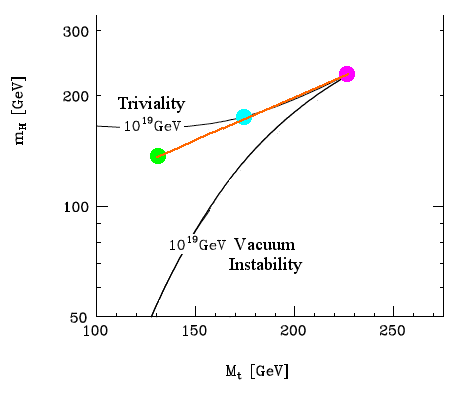
The Green Dot

is the low-mass state of a 130 GeV Truth
Quark and a 145 GeV Higgs.
That low-mass Higgs is in the 110-160 GeV range where a Higgs is needed
for
the Standard Model to work up to the Planck Scale.
The Cyan Dot

is the middle-mass state of a 174 GeV Truth
Quark and a 180 GeV Higgs.
That mid-mass Higgs is in the 160-210 GeV range of the Higgs Triviality
Boundary.
The Magenta Dot

is the high-mass state of a 220 GeV Truth
Quark and a 240 GeV Higgs.
That high-mass Higgs is in the 210-260 GeV range of the Higgs Vacuum
Instability Boundary
which range includes the Higgs VEV.
The Golden Channel Higgs -> ZZ ->
4 lepton 2/fb ATLAS histograms for the Pumpkin Cyan

Nose
and Magenta

Eye were based on the ATLAS histogram
It was used for the middle and high mass Higgs states because it is
expected that with 5/fb of data the Golden Channel might find 3-sigma
evidence for Higgs states in the range 190-350 GeV, as shown by Roberto
Vega-Morales in "The Higgs "Golden Channel" at 7 TeV" at PHENO 2011:
May 10, 2011
where he said: "... Golden Channel: H -> ZZ -> 4l ... Very
"clean" channel due
to high precision with which e and mu are measured and is fully
reconstructible ... Suffers from small cross sections ...
There are 3 peaks that are located
roughly where my 3-state Higgs model has its 3 mass states
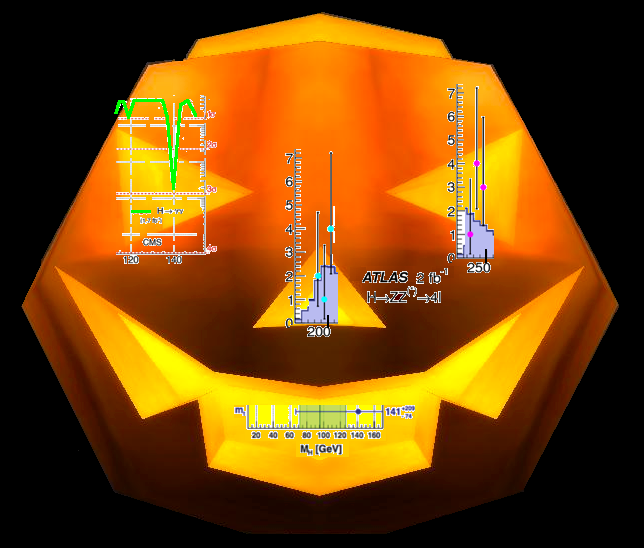
 Eye: Higgs -> GammaGamma 1.7/fb CMS analysis
for 110-160 GeV Higgs search;
Eye: Higgs -> GammaGamma 1.7/fb CMS analysis
for 110-160 GeV Higgs search; Nose: Higgs -> ZZ -> 4 lepton 2/fb ATLAS histogram for
160-210 GeV Higgs search;
Nose: Higgs -> ZZ -> 4 lepton 2/fb ATLAS histogram for
160-210 GeV Higgs search;  Eye: Higgs -> ZZ -> 4 lepton 2/fb ATLAS
histogram for 210-260 GeV Higgs search.
Eye: Higgs -> ZZ -> 4 lepton 2/fb ATLAS
histogram for 210-260 GeV Higgs search. 
 is the low-mass state of a 130 GeV Truth
Quark and a 145 GeV Higgs.
is the low-mass state of a 130 GeV Truth
Quark and a 145 GeV Higgs.  is the middle-mass state of a 174 GeV Truth
Quark and a 180 GeV Higgs.
is the middle-mass state of a 174 GeV Truth
Quark and a 180 GeV Higgs.  is the high-mass state of a 220 GeV Truth
Quark and a 240 GeV Higgs.
is the high-mass state of a 220 GeV Truth
Quark and a 240 GeV Higgs.  Nose
Nose Eye were based on the ATLAS histogram
Eye were based on the ATLAS histogram 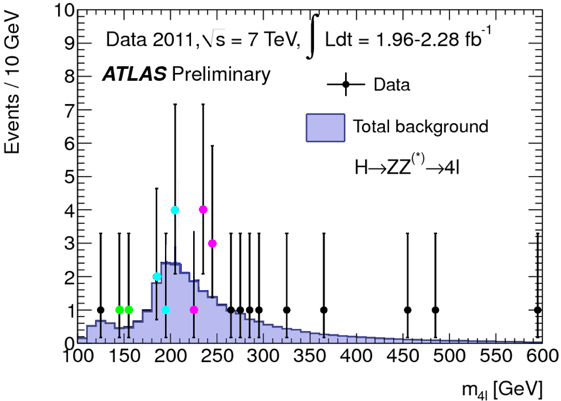
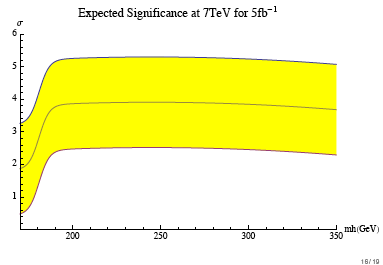 ...".
...".  Eye plot. It was based on this plot
Eye plot. It was based on this plot 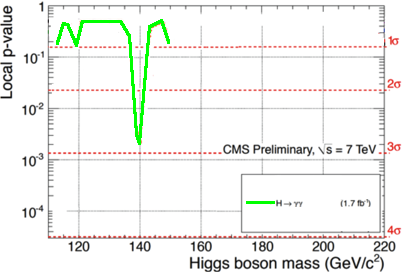
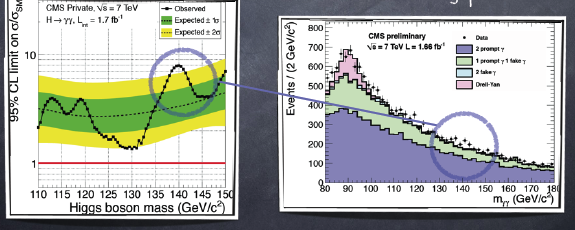
 Eye plot.
Eye plot. 
 peak is 55 per cent of what a SM Higgs
should be;
peak is 55 per cent of what a SM Higgs
should be;  peak is 20 per cent of what a SM Higgs should be;
peak is 20 per cent of what a SM Higgs should be;  peak is 25 per cent of what a SM Higgs should
be.
peak is 25 per cent of what a SM Higgs should
be.